| By Bob Weaver
In 1897 it was reported "A couple of strangers attempted to cross the river here last Tuesday morning and got into one of those deep holes, as is customary for strangers."
"The team swam out with a part of the wagon. A part of it, including the two men, floated some distance down stream, and a part of it was left in the deep water, which necessitated a fishing job."
"The several parts were finally gathered together and the men drove on. The ford at this town ought to be declared a nuisance, and closed up."
"It is only a question of time until someone will get drowned there, and then it will be too late to repair the loss. It would be better for the county to buy the ferry and make it free than to have some one or more drowned in crossing the river."
"Even better, this county needs a bridge and it ought to be here across the Little Kanawha. Some days you can't get here from the south."
Another newspaper account said "Is it not rather remarkable that a county as great and wealthy as ours cannot afford one bridge across the river which cuts it in two nearly equal portions?"
Then a major decision was made. A "modern" bridge would span the Little Kanawha. Construction began on the steel bridge on cut stone pillars with a wooden deck floor in 1911 and was completed in 1912.
CONSTRUCTION OF GRANTSVILLE'S FIRST BRIDGE
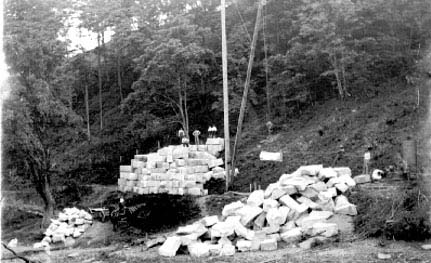
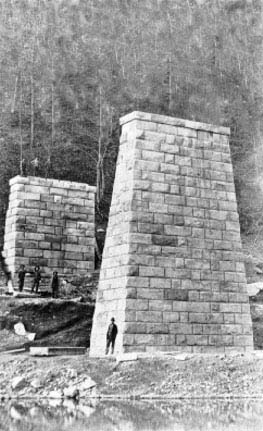
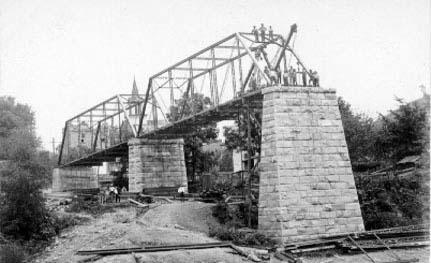
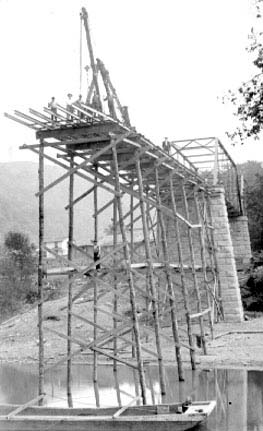
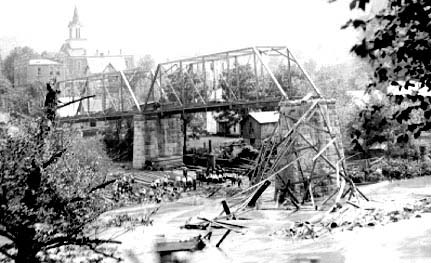
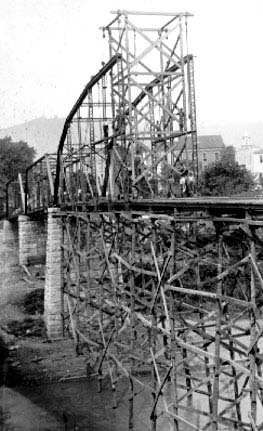
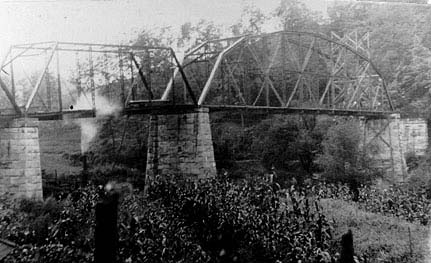
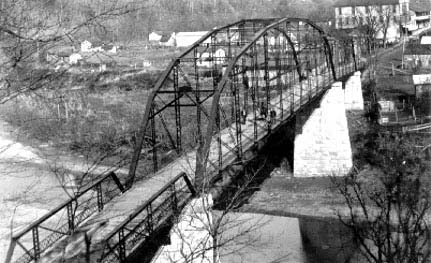
Photographs By Dudley Lutz
By the 1950s the bridge was falling in disrepair, with heavier cars and trucks using the span. Calhouner's will remember the clacking of the boards when a vehicle would cross.
Traffic increased and "squeaking by" two-way traffic became almost impossible. So traffic lights were installed for one-way flow, but then the flooring began to decay and large holes appeared.
High school students and pedestrians will surely remember dancing around the holes, which provided a straight-down view of the river. In 1956 the floor was replaced and asphalt was applied.
The bridge held out, barely, until the current structure was erected.
NEWS ACCOUNTS BEFORE CONSTRUCTION
Editor is Bridge Advocate In 1901
During the rise in the river last week the ferry boat was out of repair, and people wanting to get horses or teams across had to take it out in wanting.
Why not agitate the bridge question? We can think of nothing that would be of so much benefit to the entire county as a bridge across the river at this place.
Is it not rather remarkable that a county as great and wealthy as ours cannot afford one bridge across the river which cuts it in two nearly equal portions?
County's Division Impedes Progress in 1907
In the controversy at the courthouse, Wednesday, over the bridge proposition, it was plainly evident that there are two streams of water in Calhoun county, namely: The West Fork and the Little Kanawha river, and it was just as evident that the people who populate these two respective valleys are not united and cemented into one whole.
If this Mason and Dixon line that divides them could be for a few years obliterated, it would not be a great while until Calhoun county would be as good as any county. Until it is there will be nothing of any consequence done to improve her.
No Bridge Across Little Kanawha (1969) Bill Umpstead
The year was 1908. It was the Fourth of July and Grantsville was having a big celebration - circus, games, public speaking, and people came from far and near.
This was before the automobile had made an appearance in this section and the only way to travel was to walk, ride horseback, hack, buggy or a road wagon.
I lived at Mt. Zion, and Father hitched the horses to the wagon and we took off for the county seat town. This distance is only six miles but it took the best of two hours to travel the road down Phillips Run.
There was no bridge across the Little Kanawha River at Grantsville, so we had to ford the stream at the mouth of Phillips Run. The bottom land where the football field is, was a cornfield, and the only house that I can recall along there any place was an old log house. A road leading up the river to Russett formed an intersection along there some place, and most of the hillside was in woods. Of course I do not remember everything as I was only a small boy.
| 


